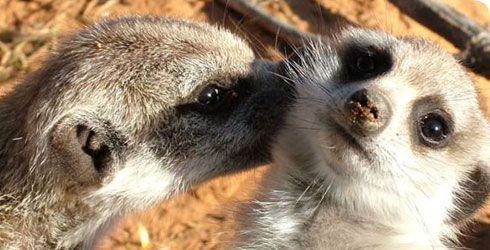Suricata suricatta (meerkat)
Meerkats are small carnivores that are active during the day (they are diurnal). They spend mornings and evenings foraging together as a group called a mob. Often, during the hottest part of the day, some or all members of the mob will seek shade under bushes or underground.
They live in social groups of 3–50 individuals (Young et al, 2006) with a clearly dominant pair of breeding individuals. The subordinate animals do not have a clear dominance hierarchy.
Dominant individuals in the wild have been observed to live up to 11 years, whilst subordinates generally have a shorter life expectancy and live for 4–5 years.
They are not currently endangered, and are classified as of least concern by the International Union for the Conservation of Nature (IUCN) Red List.
Species detail
-

Taxonomy
Meerkats are carnivores and a type of mongoose. Find out more about these mammals and their relatives.
-

Distribution
These small carnivores are found across southern Africa where they feed on a variety of animals and insects and are well adapted to the dry conditions. Find out more.
-

Behaviour
Meerkats live in groups and are territorial. They co-operate to defend their territory, protect themselves from predators and to nurture their young. Explore the intricacies of their social interactions.
-

References
Get reference material for the meerkat.
Images
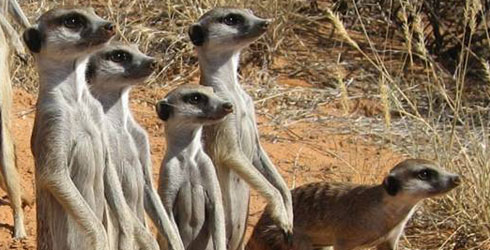
A meerkat group watching an aerial threat from a bolt hole, following a predator alarm.
© Kalahari Meerkat Project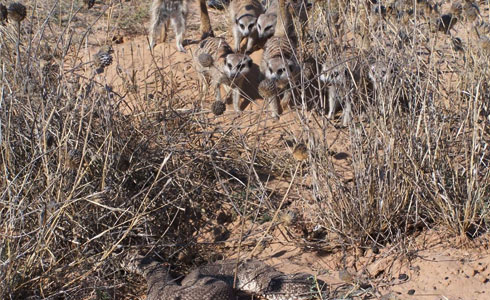
Meerkat group mobbing a puff adder.
© Kalahari Meerkat Project
Meerkat dentition, caught whilst yawning.
© Kalahari Meerkat Project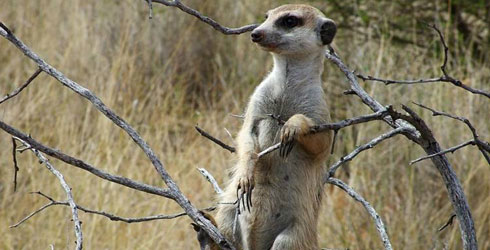
A dominant male guarding on an overturned, dead tree.
© Kalahari Meerkat Project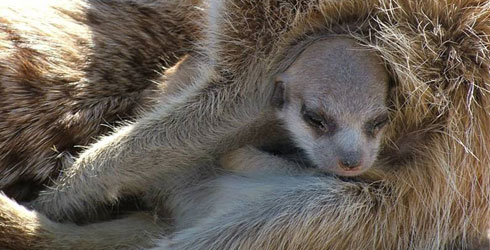
Meerkat pup sleeping.
© Kalahari Meerkat Project
Meerkat.
© Kalahari Meerkat Project
A subordinate male meerkat guarding from half way up a tree.
© Kalahari Meerkat Project
A meerkat with pups.
© Kalahari Meerkat ProjectAbout the author
Lorna Culverwell
Research Assistant
Department of Entomology (mosquitoes)
